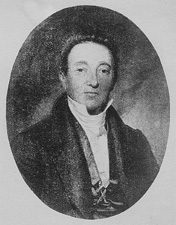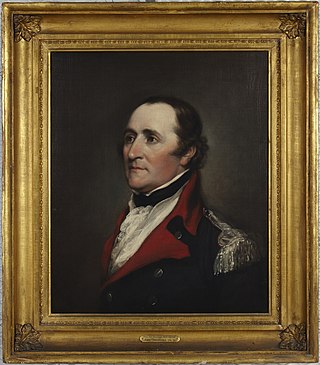
Farmington is a town in Hartford County in the Farmington Valley area of central Connecticut in the United States. The town is part of the Capitol Planning Region. The population was 26,712 at the 2020 census. It sits 10 miles west of Hartford at the hub of major I-84 interchanges, 20 miles south of Bradley International Airport and two hours by car from New York City and Boston. It has been home to the world headquarters of several large corporations including Otis Elevator Company, United Technologies, and Carvel. The northwestern section of Farmington is a suburban neighborhood called Unionville.

Suffield is a town in Hartford County, Connecticut, United States. The town is part of the Capitol Planning Region, and located in the Connecticut River Valley. As of the 2020 census, the population was 15,752. The town center is a census-designated place listed as Suffield Depot.

Canterbury is a town in Windham County, Connecticut, United States. The town is part of the Northeastern Connecticut Planning Region. The population was 5,045 at the 2020 census.

Jonas Galusha was the sixth and eighth governor of Vermont for two terms in the early 19th century.

Epaphroditus Champion was an American politician and military officer from Connecticut. He served as a U.S. Representative from Connecticut.

Joseph Trumbull was a U.S. lawyer, banker, and politician from Connecticut. He represented Connecticut in the U.S. Congress from 1834 to 1835, then again from 1839 to 1843. He later served as the 35th governor of Connecticut from 1849 to 1850.

Samuel Augustus Foot was the 28th Governor of Connecticut as well as a United States representative and Senator.

Ebenezer Huntington was an officer in the Continental Army during the American Revolutionary War, and afterwards United States Representative from Connecticut.

John Mattocks was an American Whig politician, a brigadier general in the War of 1812, U.S. Representative, and 16th governor of Vermont.
George Hull was an American, merchant, businessman, and politician from Massachusetts. A prominent shop owner in Sandisfield, Massachusetts, he served as the 15th lieutenant governor of Massachusetts from 1836 through 1843.

Dwight Foster was an American lawyer and politician from Massachusetts. He served as Massachusetts Attorney General and was an associate justice of the Massachusetts Supreme Judicial Court.
Colin Macrae Ingersoll was a Connecticut attorney, politician, and military leader. He served as a member of the United States House of Representatives for two terms in the 1850s.

Charles Herman Ruggles was an American lawyer and politician who was a U.S. Representative from New York and Chief Judge of the New York Court of Appeals.

General John Hope, 4th Earl of Hopetoun,, known as The Honourable John Hope from 1781 to 1814 and as Lord Niddry from 1814 to 1816, was a Scottish politician and British Army officer.

General Henry Champion was born to Colonel Henry Champion and Deborah Brainard. He was a descendant of the Henry Champion who settled in Connecticut in 1647. He sailed to the colony from Norwich, England.

The Gen. George Cowles House, also known as the Solomon Cowles House, is a historic house at 130 Main Street in Farmington, Connecticut. Built in 1803, it is a prominent local example of Federal style architecture in brick, built for a prominent local family. The house was listed on the National Register of Historic Places on May 11, 1982.
Lebbeus Egerton was a Vermont militia officer and farmer who served as the tenth lieutenant governor of Vermont from 1831 to 1835.
Samuel L. Pitkin, born in Hartford, Connecticut on April 1, 1803, was the Adjutant General for the State of Connecticut from 1837 to 1839. He was a member of the Pitkin family of Hartford, who were very active in politics, the military, industry and banking in early Connecticut. His great-great-great grandfather, William Pitkin, emigrated to the new world from England in 1635 after receiving an inheritance. His grandson, also named William Pitkin would serve as governor of Connecticut Colony from 1766 to 1769.

George Pierce Shelton, born in Southbury, Connecticut, on September 7, 1820, was the Adjutant General for the State of Connecticut from 1848 to 1851. In addition to serving as the Adjutant General, he served in the Connecticut State Legislature and as the Town Clerk for the city of Seymour, Connecticut

Edward Elias Bradley was the twenty eighth Adjutant General of the State of Connecticut. Bradley served as president of the Boston Buckboard and Carriage Company. He also headed the News Publishing Company. Bradley during 1901 to 1903 was the president of the New Haven Chamber of Commerce. He was commissioner of the public parks of New Haven from 1888 to 1901, and in 1910 became the president of the parks commission. Bradley was president of the Governor’s staff Association of Connecticut from 1903 to 1911. Bradley was president of the Defender Monument Association, which raised funds for the defenders monument to commemorate the successful defense of the West River. He was also the president of the Young’s Men Institute. In 1883, Bradley represented the town of Orange, Connecticut in the general assembly. Bradley was a Democrat and introduced and advocated the constitutional amendment for biennial sessions of the Legislature, which was accepted. He was the director of New Haven National Bank and was the director of Quinnipiac Fire Insurance.
















